Mars has long fascinated us as a place that may have once been hospitable to life. Although the early robotic missions of the 1960s relayed images of a Moon-like cratered terrain with a forbiddingly cold and thin atmosphere of carbon dioxide, more recent sophisticated spacecraft have provided evidence that liquid, presumably water, once flowed on Mars and still remains frozen below the surface. Managed by NASA’s Jet Propulsion Laboratory (JPL) in Pasadena, California, the Mars Science Laboratory (MSL) delivered the Curiosity rover onto Mars on Aug. 6, 2012. For the past 10 years, Curiosity has traversed across the Martian surface, investigating the planet’s geology and climate, assessing the planet’s past habitability. Its mission continues, far exceeding its originally-planned one Martian year life expectancy.
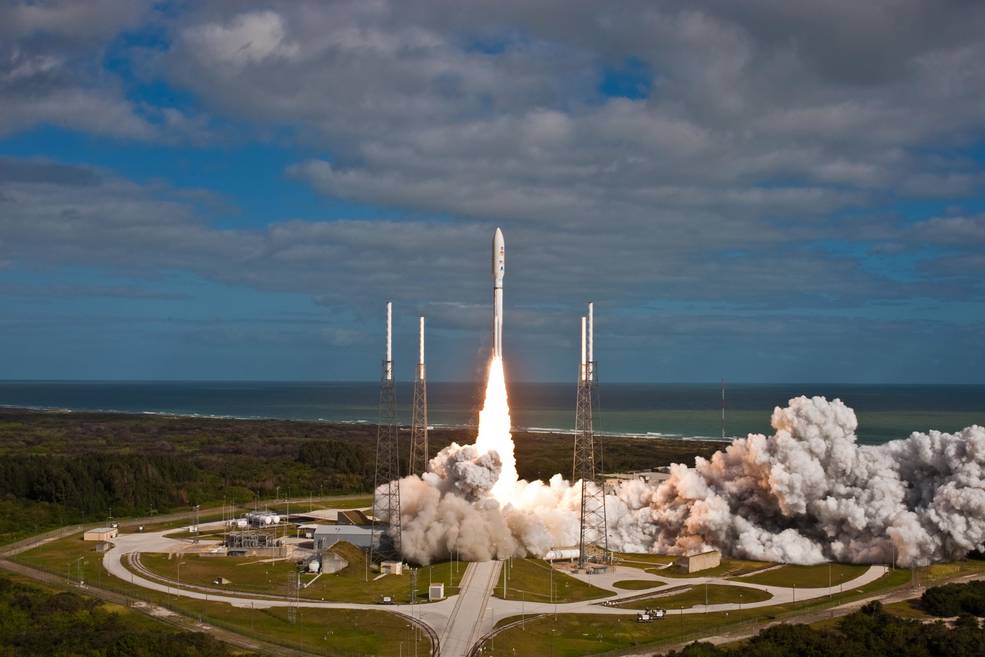
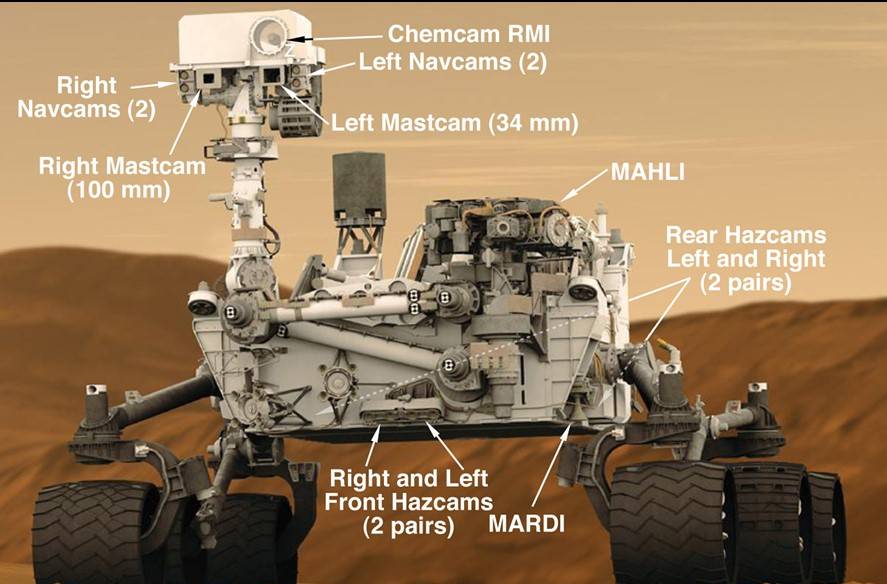
Left: Launch of Curiosity. Right: Illustration of Curiosity on Mars, showing its instruments and cameras.
The MSL carrying Curiosity lifted off from Launch Pad 41 at Florida’s Cape Canaveral Air Force Station, now Cape Canaveral Space Force Station, on Nov. 26, 2011, atop an Atlas V rocket. Including its aeroshell, the spacecraft weighed 8,583 pounds at launch. Curiosity’s primary objectives included investigating the Martian climate and geology and assessing whether the planet ever enjoyed conditions favorable to support life, carrying out these studies for one Martian year, equivalent to 687 Earth days. To conduct its studies, MSL and Curiosity carried 11 instruments supporting over 400 international scientists:
- The MSL entry, descent, and landing instrument (MEDLI) installed in the heat shield to measure aerothermal environments and atmospheric density during the descent.
- The Mars descent imager (MARDI), a downward-facing camera to photograph the surface during the descent.
- The Mastcam system of two multi-spectrum cameras for imaging on the surface.
- The chemistry and camera (ChemCam) system consists of the first laser-induced breakdown spectroscope used in planetary science and the remote micro-imager camera.
- The Mars hand lens imager (MAHLI), a camera mounted on the robotic arm to obtain close-up images of surface structures.
- The alpha-particle X-ray spectrometer (APXS) to determine the elemental composition of samples.
- The chemistry and mineralogy (CheMin) X-ray diffraction and X-ray fluorescence spectroscopy to identify the minerals in rocks, especially to look for traces of water.
- The sample analysis at Mars (SAM) consists of a mass spectrometer, gas chromatograph, and a tunable laser to search for organic compounds in atmospheric and surface samples.
- The dynamic albedo of neutrons (DAN) instrument to search for signs of hydrogen and water ice.
- The radiation assessment detector (RAD) to measure the radiation environment during the transit and on the surface.
- The rover environment measuring station (REMS) meteorological instrument to measure humidity, pressure, temperature, wind speed, and ultraviolet radiation.
Instead of relying on solar arrays to power its systems and instruments, Curiosity carried a multi-mission radioisotope thermoelectric generator (MMRTG) that uses the heat generated by the radioactive decay of a pellet of plutonium to generate electricity.
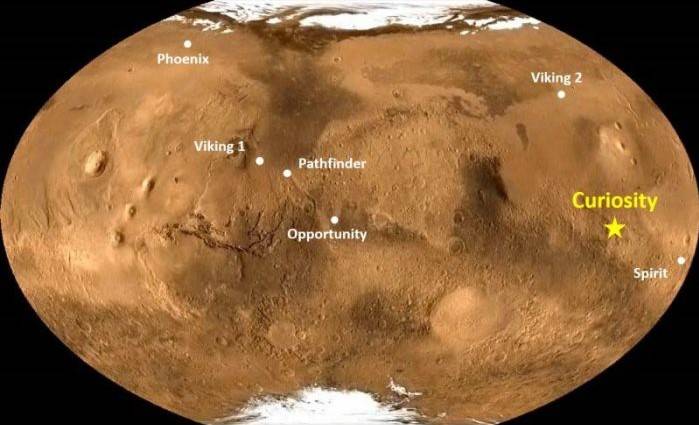
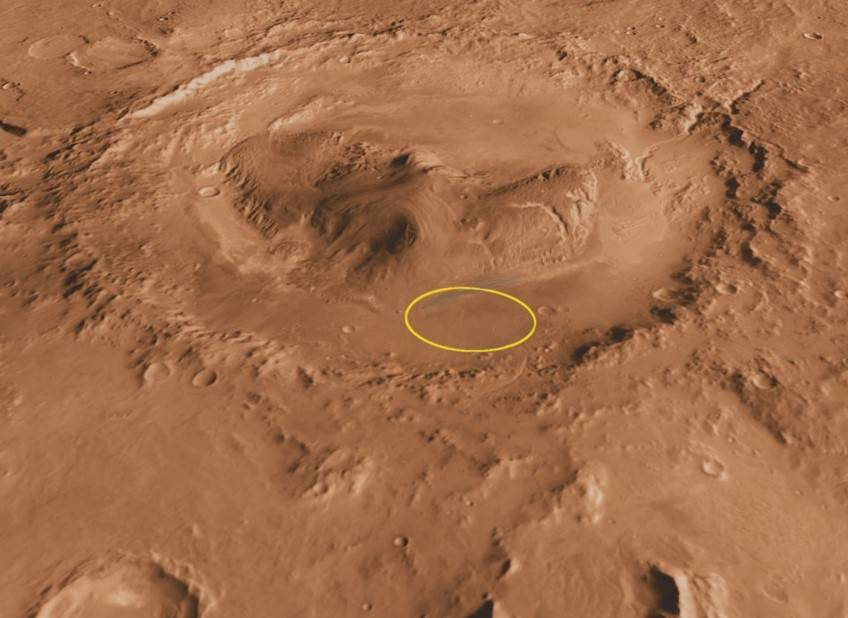
Left: Global map of Mars, showing Curiosity’s landing site in relation to earlier landers and rovers. Right: Oblique image of Gale Crater, showing Curiosity’s targeted landing ellipse in the plain surrounding Mount Sharp.
For Curiosity’s landing site, scientists chose Gale Crater, an impact crater estimated to be 3.5 to 3.8 billion years old. Based on orbital imagery, scientists surmised that during a wet period in Mars’ history, Gale filled with sediments, first water-deposited and then wind-deposited when the planet’s climate turned dry. Wind erosion then scoured out the sediments, leaving an isolated mountain formally named Aeolis Mons, but commonly referred to as Mount Sharp. The precise landing site targeted an alluvial fan on the Aeolis Palus, the plain surrounding the mountain. Scientists hoped Curiosity could traverse from the plain up to the mountain, examining the uncovered sedimentary layers to reveal Mars’ history.
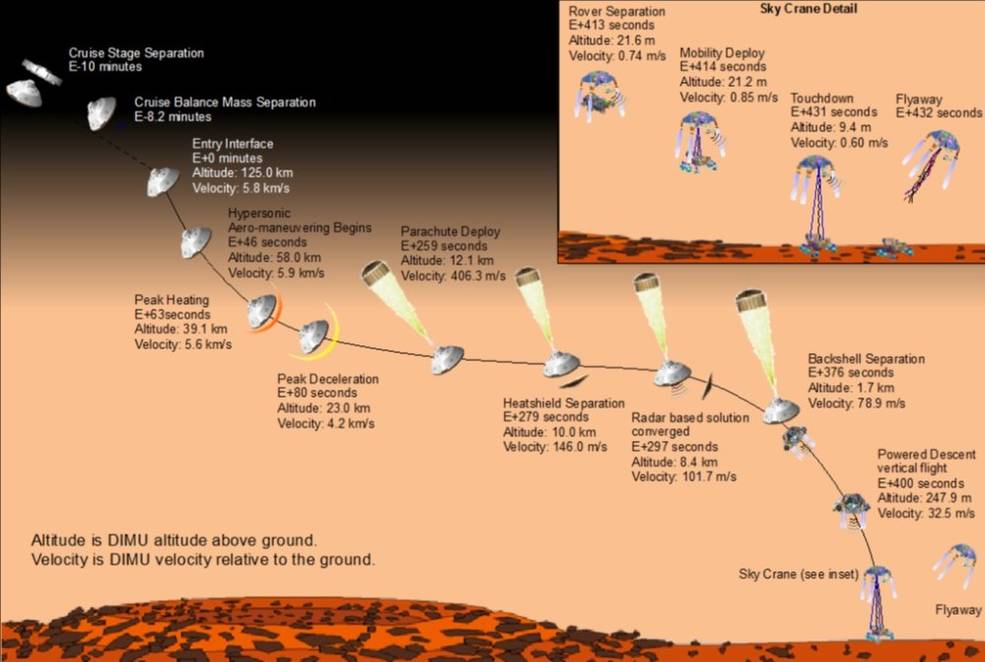
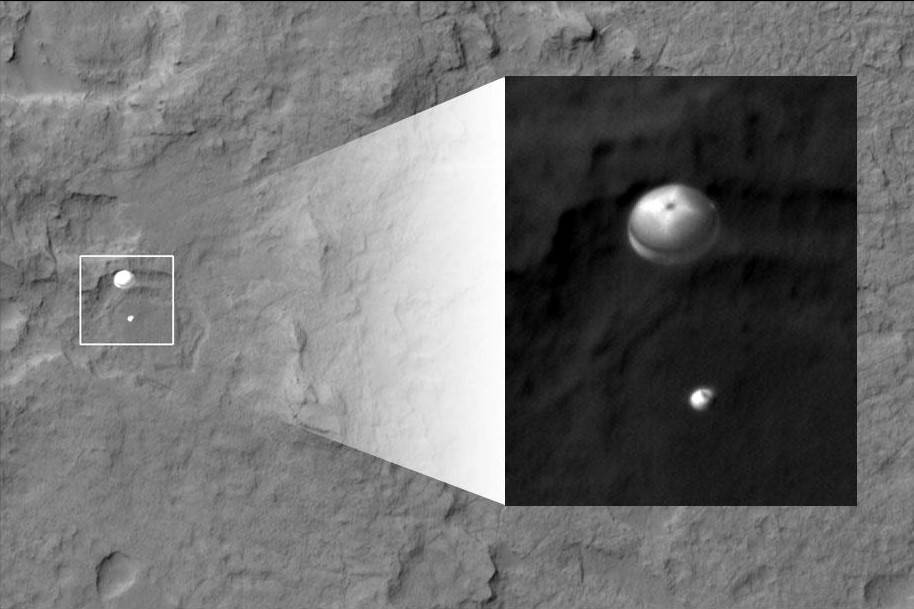
Left: Illustration of Curiosity’s entry, descent, and landing sequence. Right: The Mars Reconnaissance Orbiter captured an image of Curiosity descending on its parachute.
Following a 254-day and 350-million-mile journey, MSL arrived at Mars on Aug. 6, 2012. It joined NASA’s 2001 Mars Odyssey and Mars Reconnaissance Orbiter (MRO) and the European Space Agency’s Mars Express operating in orbit around Mars. NASA’s Opportunity rover was exploring Endeavour Crater in the Meridiani Planum area of Mars at the time of MSL’s arrival. Following deceleration through the Martian atmosphere first with the use of its heatshield and then by its parachute, MSL finished the landing in a novel fashion. At just over a mile above the surface, the spacecraft jettisoned its parachute. The descent stage, located above the rover, used a sky crane system of cables to lower it by about 25 feet and ignited its engines to begin the final stage of the descent. The sky crane brought the rover to a halt on the surface, and after two seconds to ensure it had established a stable attitude, the rover cut the connection to the sky crane that then used its engines to safely fly clear of the rover and crash some distance away. The 1,982-pound Curiosity rover had arrived in Gale Crater to begin its epic journey.
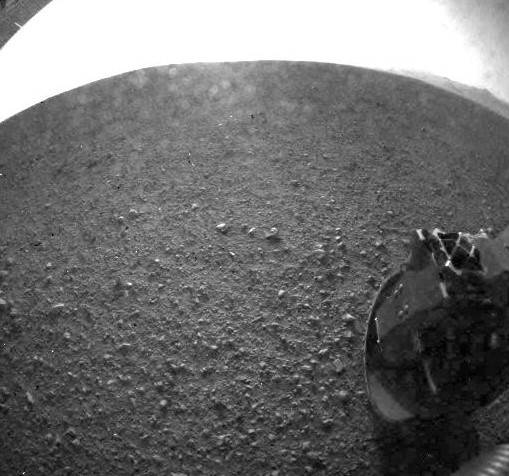
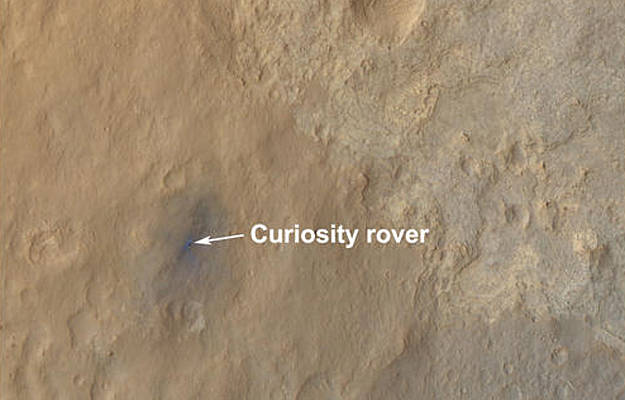
Left: The first image returned by Curiosity from the landing site in Gale Crater. Right: The Mars Reconnaissance Orbiter imaged Curiosity on the surface of Mars.
Within minutes after landing, Curiosity took its first images of the surface using its front and rear hazard cameras, relaying them to Earth through the 2001 Mars Odyssey orbiter. The rover spent its first 90 Martian days, or Sols, commissioning all its systems, unstowing and deploying its various instruments, and taking numerous images and panoramic views of its surroundings. Curiosity took its first test drive of 23 feet on Sol 16 (Aug. 22). That same day, on what would have been his 92nd birthday, NASA named the landing site for author Ray Bradbury, who died on June 5, 2012.
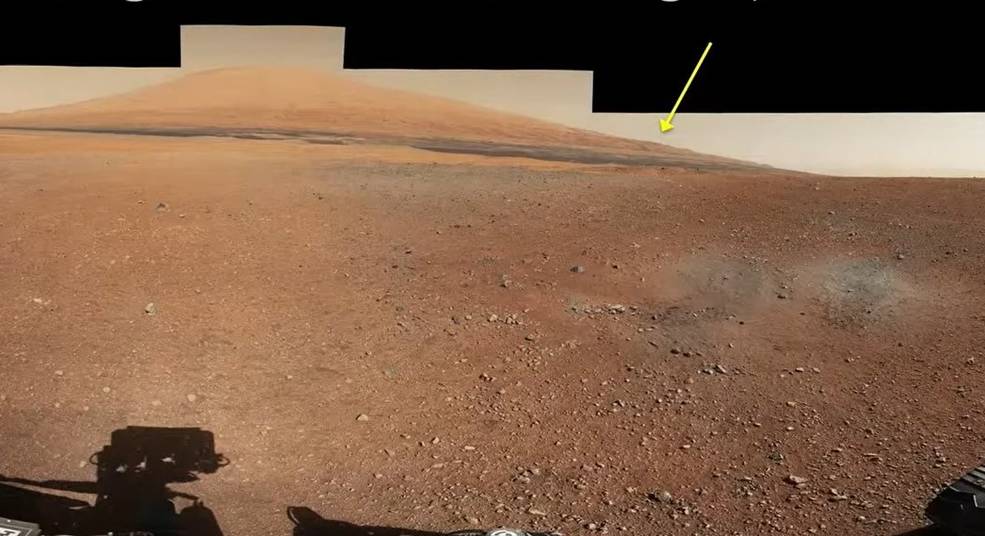
Panorama taken by Curiosity on Sol 2 (Aug. 8, 2012), with Mount Sharp in the distance and the arrow pointing to its location in July 2022.
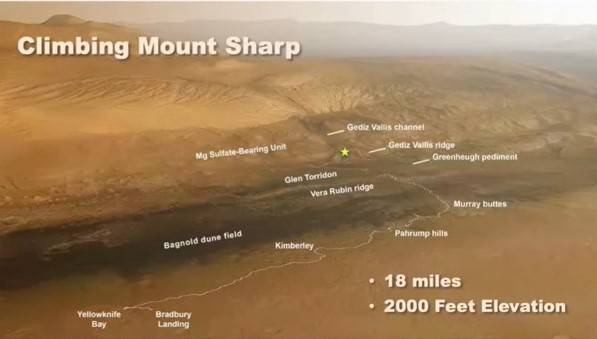
Curiosity’s traverse route the past 10 years superimposed on an
oblique view of Gale Crater. The rover touched down at Bradbury
Landing and the star on the map marks its approximate
location in July 2022.
Before sending Curiosity on its years-long drive southwest toward Mount Sharp, mission planners directed it east toward Glenelg in Yellowknife Bay, a site of great interest where three different geologic features intersect. Beginning the drive to Glenelg on Sol 22, and after sampling sites along the way, Curiosity made its first stop there on Sol 55. The rover continued exploring the area until Sol 324 (July 5, 2013), when it began the drive to Mount Sharp in earnest.
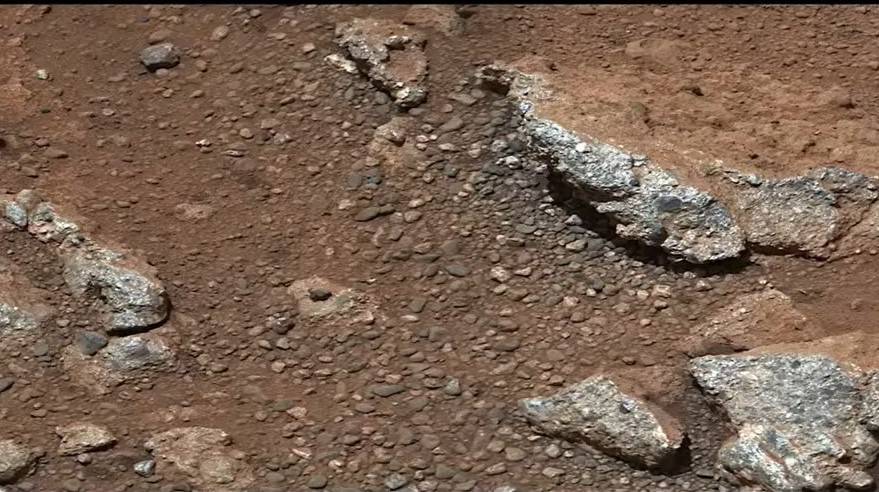
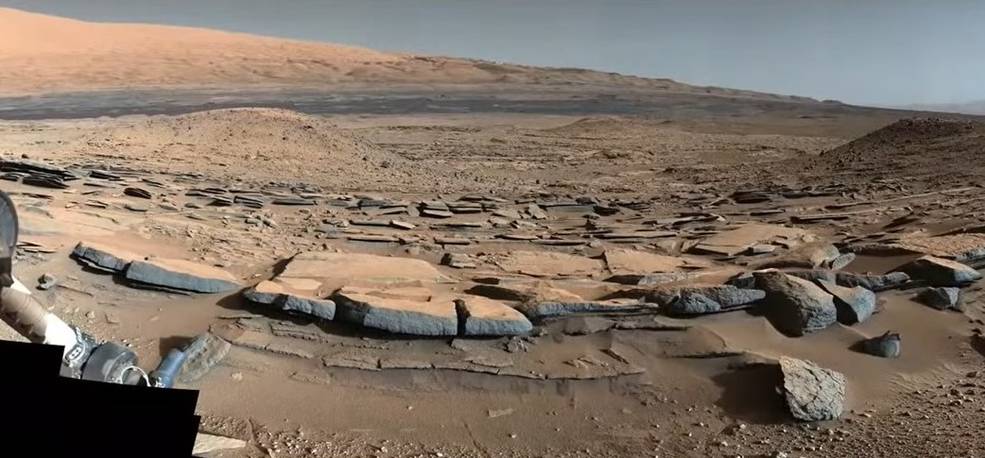
Left: Rounded pebbles in a dry stream bed. Right: Streams forming a delta
as they empty into an old lake, imaged on Sol 580 (March 25, 2014).
In its quest for evidence of flowing water, Curiosity made a discovery early in its traverse to Glenelg. At a site called Hottah, images revealed what appeared to be an eroded dry stream bed with an abundance of rounded pebbles, most likely formed by flowing water as they are on Earth. Further along on its drive across the plain, at a site called Kimberley, Curiosity found evidence that ancient streams had flowed into a lake, forming deltas, and filling the crater with sediment. Curiosity imaged the dried remains of those deposited sediments. On Sol 669 (June 24, 2014), Curiosity completed one Martian year of exploration, formally ending its primary mission. With all its systems operating well, except for greater-than-expected wear and tear on some of its aluminum wheels, Curiosity began its first two-year extended mission (EM-1). On Sol 746 (Sept. 11, 2014), having already driven 5.6 miles from Bradbury Landing, Curiosity arrived at the slopes of Mount Sharp and began its ascent. On Dec. 16, 2014, scientists announced that they identified organic molecules in drilled rock samples that Curiosity had collected and analyzed.

Curiosity’s panorama of the Murray Buttes on Sol 1451 (Sept. 4, 2016).
After driving over the dried mud rock of the former lakebed, Curiosity encountered the features called Murray Buttes. After Mars’ climate turned drier causing the lake to dry up, over billions of years it filled with wind-blown dust that turned to sandstone. Later, wind erosion carved out the buttes that Curiosity drove through and imaged.
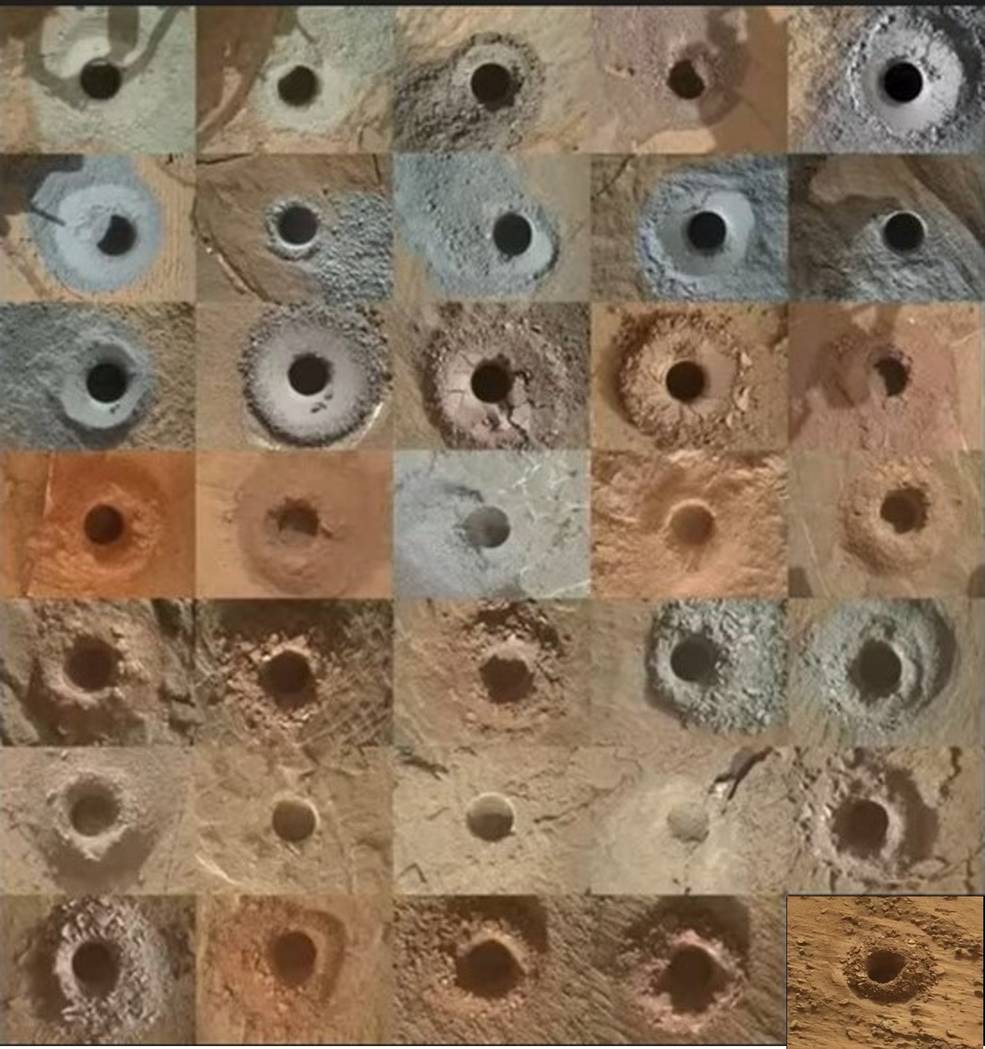
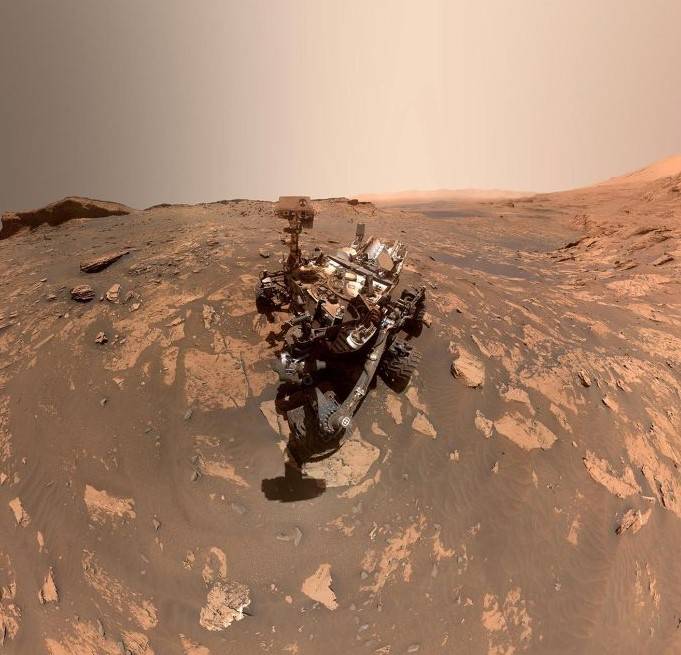
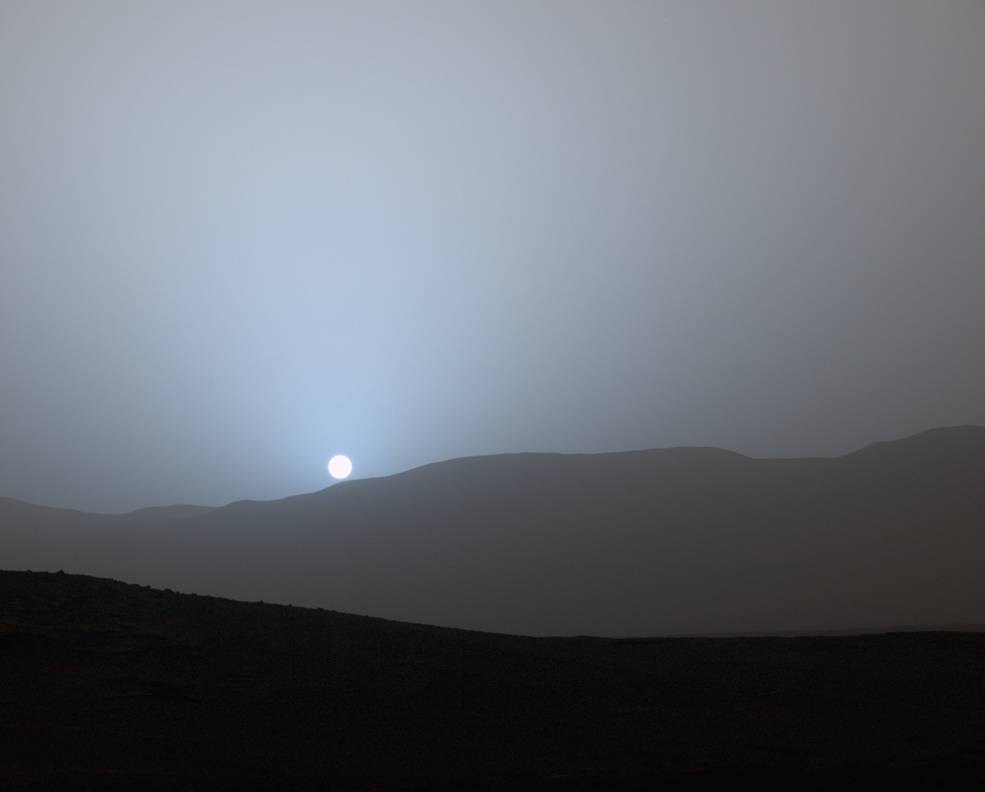
Left: Composite image of Curiosity’s 35 drill samples. Middle: On Sol 3303 (Nov. 20, 2021), Curiosity poses for one of its many selfies. Right: Curiosity captures a Martian sunset on Sol 956 (April 15, 2015).
During the course of its extensive traverse, Curiosity conducted detailed studies of the local geology. This included drilling into rocks to collect samples not recently exposed to the Martian atmosphere and conducting detailed compositional analyses. To date, Curiosity has drilled 35 rocks samples. Along the way, the rover posed for a number of selfies, often with spectacular backdrops. Over the years, Curiosity has changed color as Martian dust has accumulated on its surfaces. The rover has also taken the time to photograph stunning Martian sunsets.
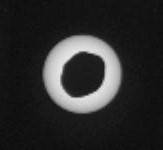
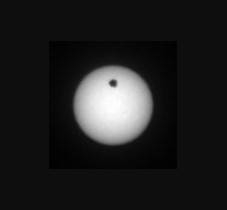
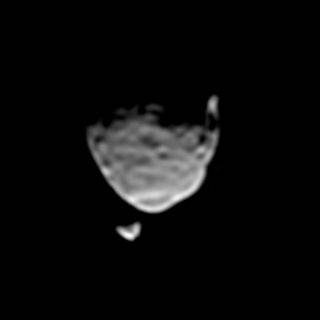
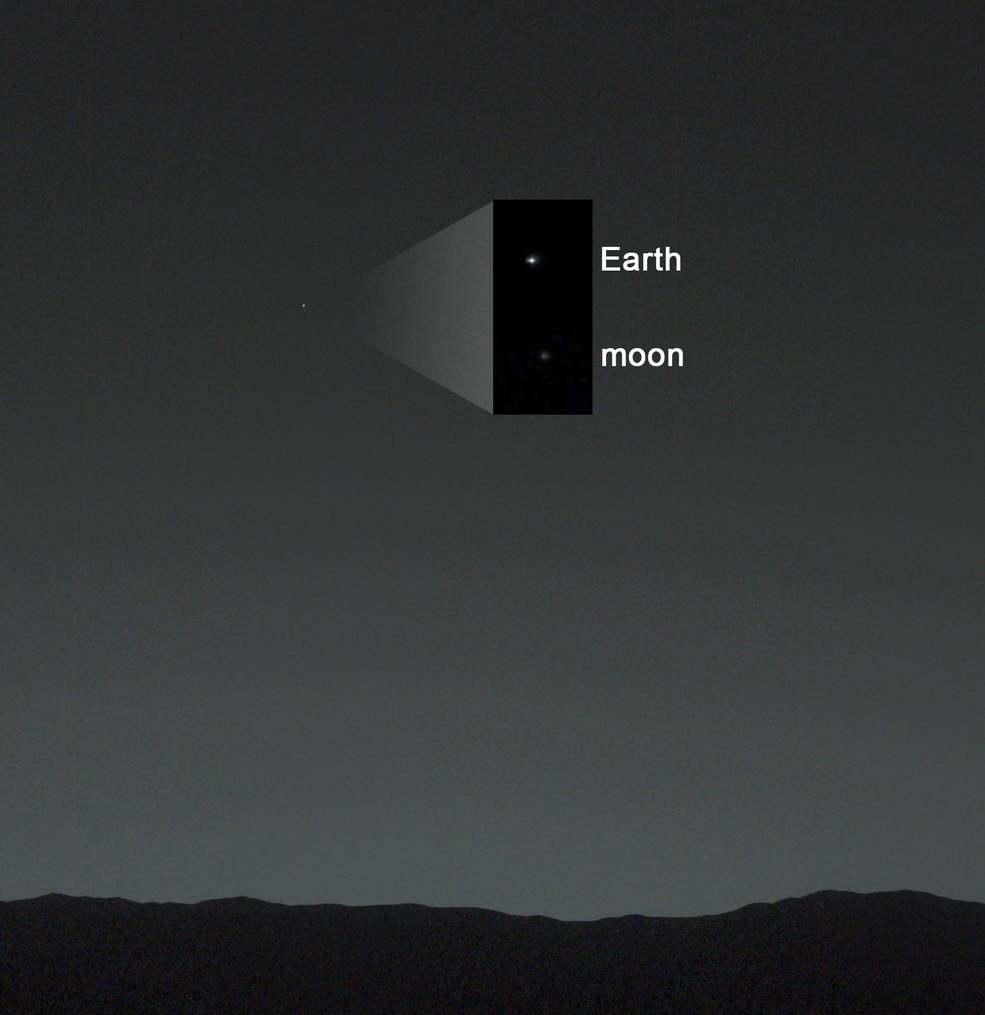
Left: Phobos during an annular solar eclipse. Middle left: Deimos transiting across the Sun. Middle right: Phobos occulting Deimos. Right: Curiosity images the Earth-Moon system from the surface of Mars.
When not busy photographing its surroundings on Mars, Curiosity turned its cameras skyward to capture celestial events from its unique vantage point. It captured an annular solar eclipse by Phobos, the larger of Mars’ two moons. The moon’s small size relative to the Sun does not create a total eclipse. Mars’ smaller moon Deimos passed in front of the Sun in an event astronomers more properly termed a transit than an eclipse. On another occasion, Curiosity imaged Phobos passing in front of the small, more distant, moon Deimos. The rover also imaged the planet Mercury transiting across the Sun. From the surface of Mars, Curiosity imaged the Earth and Moon, the planets Venus, Jupiter, and Saturn, asteroids Ceres and Vesta, and several comets.
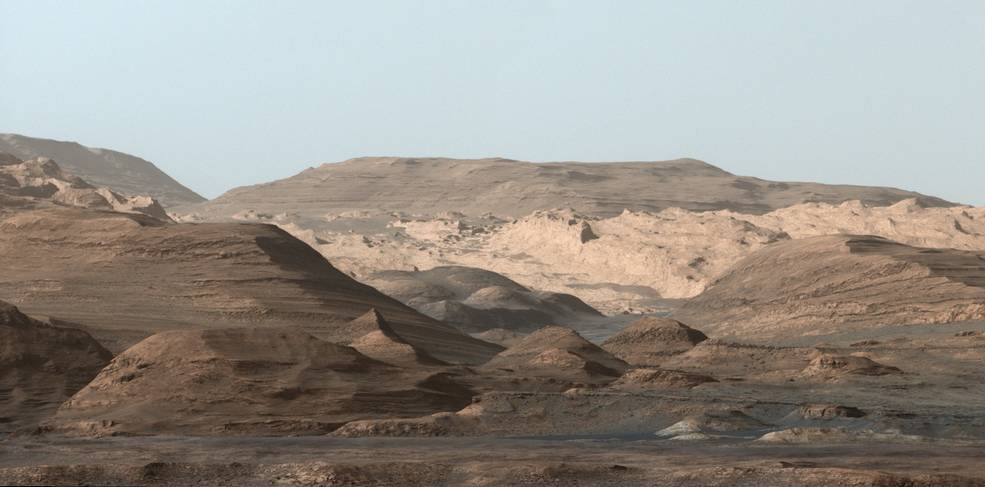
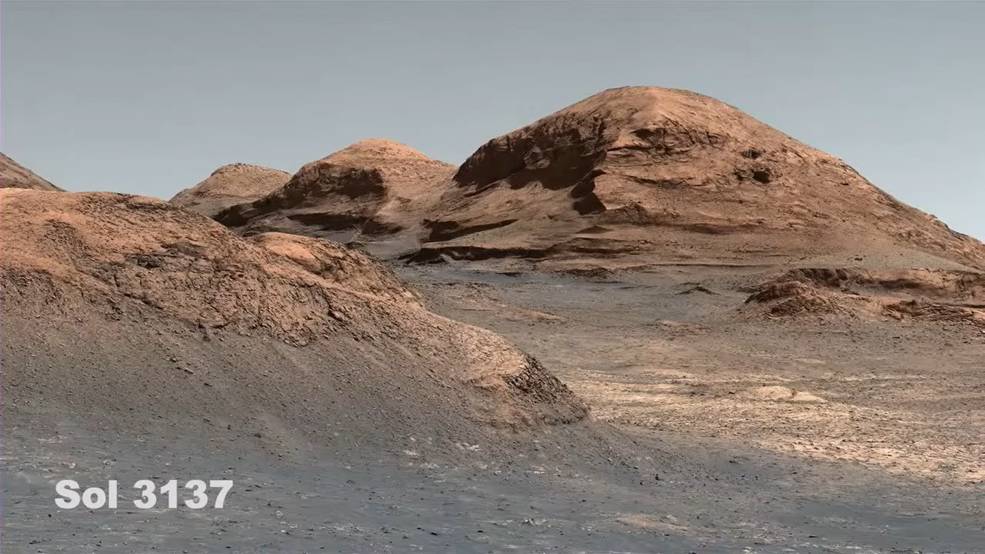
Left: Curiosity’s image of foothills on the way up Mount Sharp on Sol 1100 (Sept. 9, 2015). Right: Curiosity among the hills of Mount Sharp on Sol 3137 (June 3, 2021).
The intrepid rover continued its climb up Mount Sharp, driving through its foothills. Along the way, it encountered the various layers of sediments, representing tens of millions of years of Mars’ history. From its landing site in the plains, Curiosity ascended about 2,000 feet in elevation while driving more than 17 miles. Having completed its two-year EM-1, in October 2016, Curiosity began EM-2, a three-year campaign to continue its climb up Mount Sharp. The collection of science and imagery continued unabated with the start of the three-year EM-3 in October 2019, greatly extending the temporal record of ancient environments.

Curiosity looks back from Mount Sharp down toward its landing site (arrow) on
the plain on Sol 3308 (Nov. 25, 2021).
In November 2021, Curiosity took a panoramic photograph looking back down into the plain, its landing site visible in the distance. The location from where it took the image corresponds roughly to the arrow in the photograph taken shortly after landing.
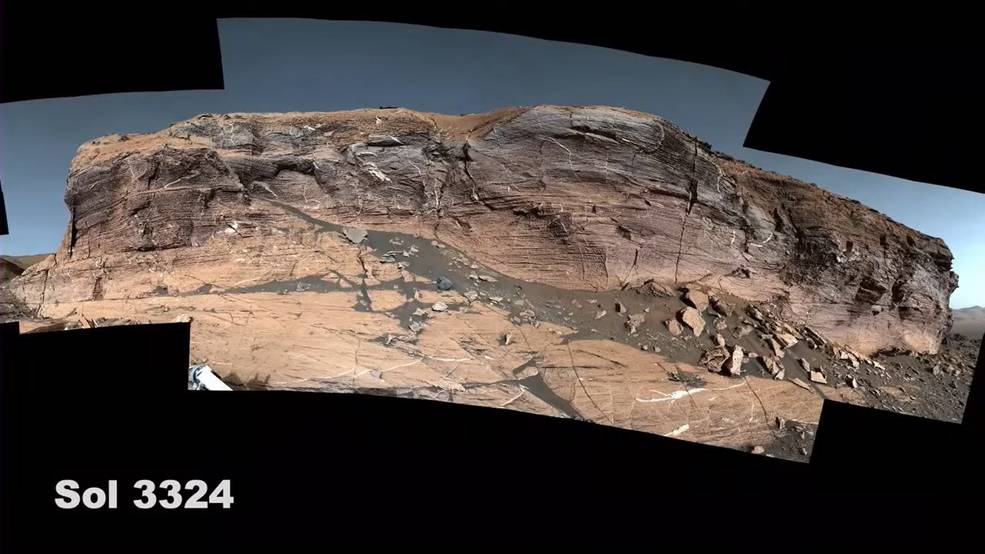
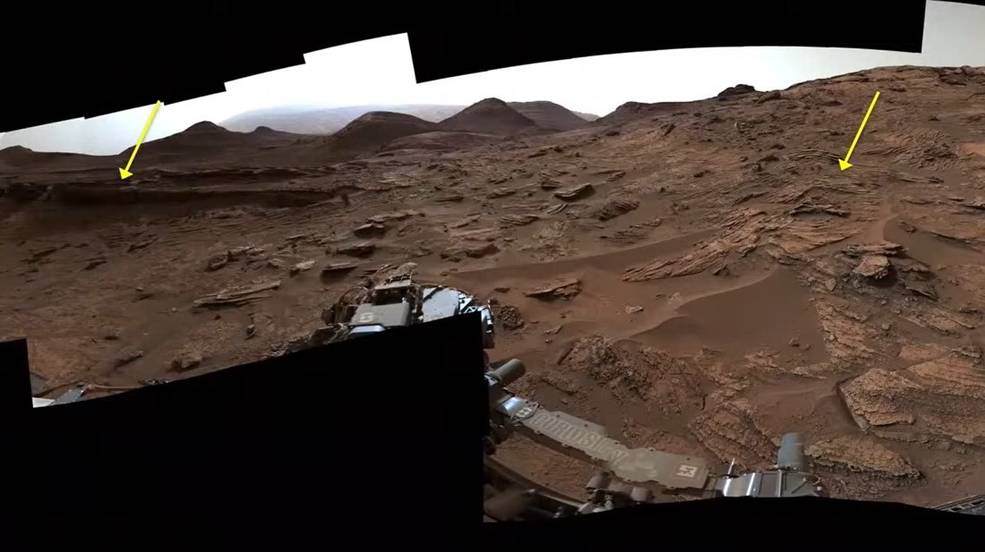
Left: Maria Gordon Notch cliff face in the hills of Mount Sharp taken on Sol
3324 (Dec. 12, 2021). Right: Stream-deposited (left arrow) and wind-blown
deposits (right arrow) in the area near Sierra Maigualida
on Sol 3481 (May 22, 2022).
Continuing up the slopes of Mount Sharp, Curiosity encountered dramatic cliff faces driving through the Maria Gordon Notch, showing evidence that ground water had once flowed through the rocks, leaving different colored mineral deposits. As Curiosity continued to climb higher, in the area near Sierra Maigualida, it passed out of the zone created by lake formations and into areas created by wind-blown and stream-borne deposits. The continuing drive through the plain and up onto Mount Sharp represents a trip through time, exploring Mars’ past of wet and dry epochs. The Curiosity science team has used rover observations to assemble the first continuous, high-resolution geological record of ancient Mars spanning 1,300 feet of stratigraphy, representing millions, perhaps tens of millions, of years of deposition. The data include nearly one million images, nearly one million spectral measurements from thousands of rock and soil targets, millions of environmental measurements, and analysis of scooped samples and 35 drilled rock samples, leading to more than 700 peer-reviewed publications by the Curiosity team and external authors. Curiosity has found ample evidence that in its ancient past, Mars enjoyed an environment habitable to life, with ample sources of water. The reasons for the change in climate to a much drier one cannot be fully explained. The identification of organic molecules in collected rock samples adds another line of evidence pointing to Mars’ former habitability.
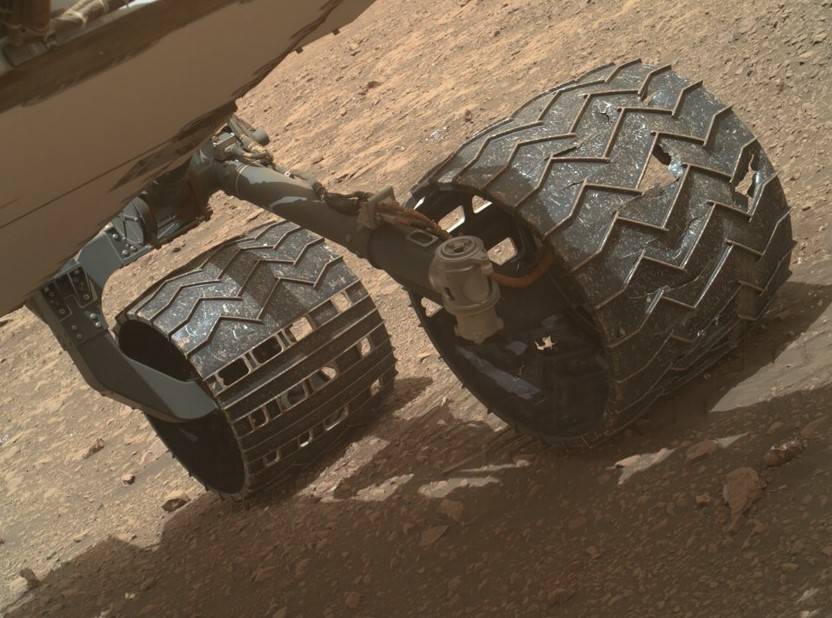
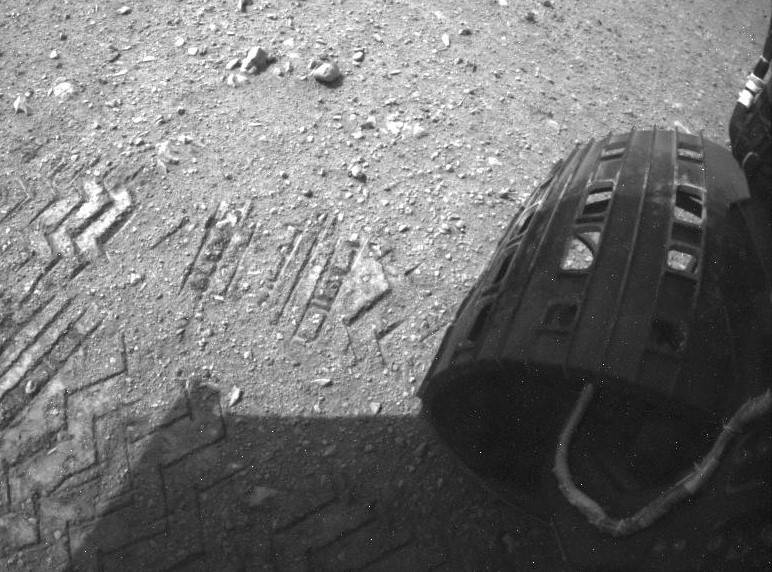
Left: Curiosity’s image of damage to one its wheels.
Right: Wheel and tracks showing the Morse Code spelling out J-P-L.
After 10 years driving on the rough surface of Mars, Curiosity remains in remarkably good shape. Although an alarming amount of wheel damage was first noted in December 2013, mission managers have managed to keep additional damage to a minimum and are confident they have many more years left in them. The output of Curiosity’s MMRTG electrical power generator continues to decline at its expected rate and should be able to support rover operations without reduced productivity for at least several years. With very few exceptions, Curiosity’s science instruments continue to function as expected. Since Curiosity arrived, Mars has become a much busier place. Although Opportunity stopped working in 2018, a veritable flotilla of international spacecraft continues the exploration of the Red Planet, from orbit and from the surface. The Mars 2020 Perseverance rover, a near-twin of Curiosity, benefited greatly from the experience of the earlier rover, both in its development and operations now that it is also on Mars, exploring the Jezero Crater.
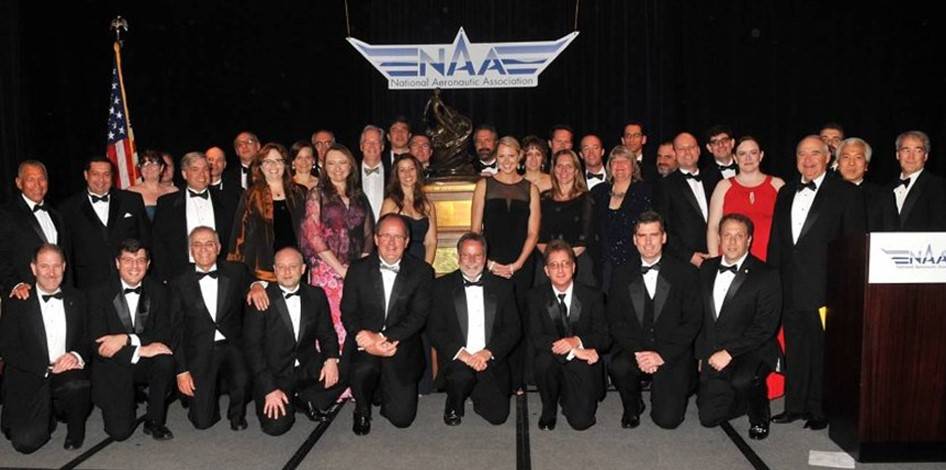
The NASA JPL Mars Science Laboratory Curiosity Project Team receiving
the National Aeronautics Assocation’s 2012 Robert J. Collier
Award on May 9, 2013.
Image credit: courtesy National Aeronautics Association.
In 2012, the U.S. National Aeronautics Association awarded the NASA JPL MSL Curiosity Project Team with the prestigious Robert J. Collier Trophy in recognition “of the extraordinaty achoevements of successfully landing Curiosity on Mars, advancing the nation’s technological and engineering capabilities, and significantly improving humanity’s understanding of ancient Martian habitable environments.”
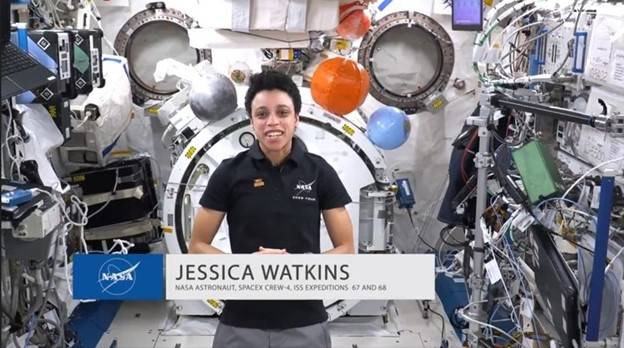
NASA astronaut Jessica A. Watkins sending Curiosity a 10th
birthday message from aboard the International Space Station.
To help Curioisty celebrate its 10th anniversary on Mars, NASA astronaut and former Curioisty science team member at JPL Jessica A. Watkins recorded this message from aboard the International Space Station. Jessica wished Curiosity well, saying, “Here’s to 3,554 Sols of exploration and discovery and to 3,554 more to come!”
Curiosity’s story continues…



























